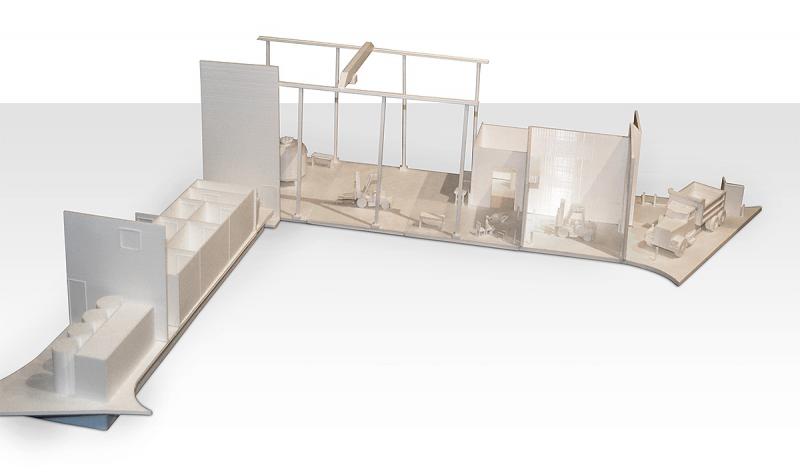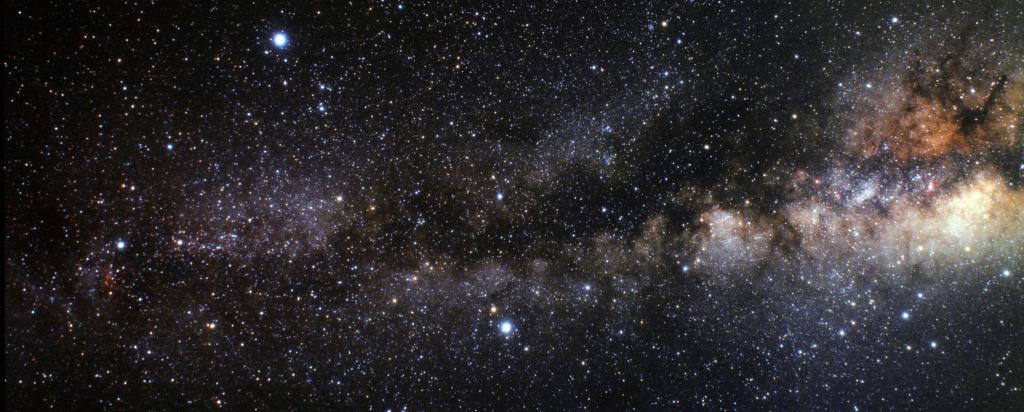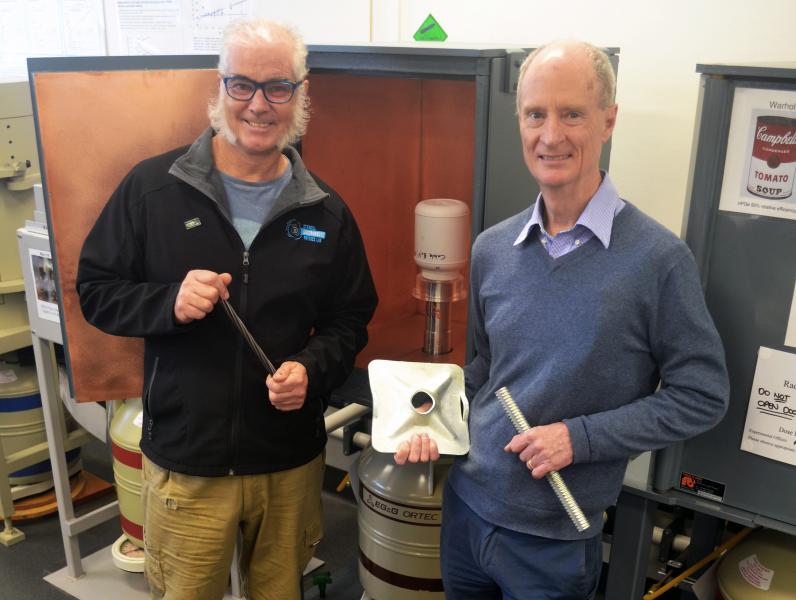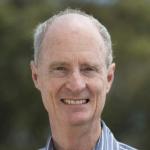

Published on the 24th September 2019 by ANSTO Staff
The first phase of construction work on the Stawell Underground Physics Laboratory (SUPL), where a Southern Hemisphere detector to detect dark matter will be located, is underway at the Stawell mine site in Victoria.
ANSTO, Melbourne University, Swinburne University, University of Adelaide and the Australian National University are collaborating on the project to build SUPL. ANSTO is contributing expertise in ensuring the laboratory retains ultra-low levels of background radiation.
ANSTO is also part of a larger umbrella national and international collaboration, The ARC Centre of Excellence for Dark Matter Particle Physics that recently received $35 million in funding from the Australian Research Council. The collaboration is led by Prof Elisabetta Barberio of the University of Melbourne.
Why search for dark matter?
The science world is searching for dark matter because it has the potential to answer one of the biggest questions in physics. Astronomical measurements tell us that 85 per cent of the matter in the universe is dark matter, but its nature is unknown. Detection of particles of dark matter would have an impact comparable to the discovery of the Higgs boson and gravity waves. It would confirm that dark matter particles provided the gravitational seeds for the formation of galaxies.

A 3D model of the SUPL lab, 3D printed by Alison Flynn at ANSTO, will house the SABRE detector at the junction of the two wings.
Construction of SUPL, which will house the highly sensitive SABRE detector, is one component of a multi-faceted approach to the challenge to find evidence of dark matter.
Staff at ANSTO who are contributing to the collaboration include Dr Richard Garrett, Dr Dale Propokovich, Mr Adam Sarbutt and Dr Mike Hotchkiss.
Adam Sarbutt, Senior Research Technician in Nuclear Stewardship team at ANSTO, has been lending expertise in radiation measurements of materials that will be used in the construction of the laboratory at the site and at Lucas heights campus.
Member of the Steering Project Committee Dr Richard Garrett said, “Since the announcement of $5 million in matching fund from the Victorian Government to the Commonwealth allocation of $5 million, activity has picked up significantly. Stawell mine staff have begun some of the preliminary excavations on access areas to the lab, which will be located a kilometre below the surface”.
The laboratory is located at that depth because the overlying rock shields it from particles, such as cosmic rays, reaching the earth.
Recently a tent was set up in a holding area at 729m metres below surface, where measurements can be taken.
Sarbutt spent a week at the site testing sand, aggregates and cement that will be used in SUPL. An ANSTO detector was transported and established at the 729m site for rapid measurements of SUPL material during construction.
Tests on the steel used in the rock bolts are being done at ANSTO’s nuclear measurement labs at Lucas Heights campus to identify and measure the quantities of naturally occurring radioactive isotopes in the materials.

Adam Sarbutt and Richard Garrett hold samples of the steel rock bolts to be used in constructing the lab, which were analysed for levels of radioactivity.
“All gamma spectroscopy measurements on the materials to date have been within acceptable ranges, which is encouraging,” said Garrett.
“We are trying to keep noise from natural radiation to an absolute minimum to prevent it swamping any potential dark matter particle signals that might be detected,“ said Sarbutt.
Soil and rocks contain radioactive potassium, uranium and thorium, as well as emitting radon.
Potassium-40, the same radioisotope you find in bananas, has a half-life of a billion years.
“We will remove the radon that seeps out of rock with a very costly filtration unit that uses activated charcoal and coat the walls of the tunnel with shotcrete.
“Normal cement is not good enough for the laboratory. We are using a special blend from Queensland and an aggregate gravel is coming from South Australia,” said Garrett.
Dr Lindsay Bignell of ANU has been partnering with ANSTO in the radiation measurement and data analysis of the lab materials.
Stawell miners are doing the excavating work.
The approach is conceptually similar to the process for constructing ANSTO’s Environmental Radioactivity Measurement Centre.
SABRE is a direct-detection experiment for dark matter particles. Dark matter particles are expected to interact directly with atoms within a crystal made of sodium iodide that has been doped with thallium. An interaction is expected to result in the release of a brief burst of light within the crystal that can be detected and measured.
SABRE North and SABRE South etectors will be located in both of the Earth’s hemispheres.
For more information
